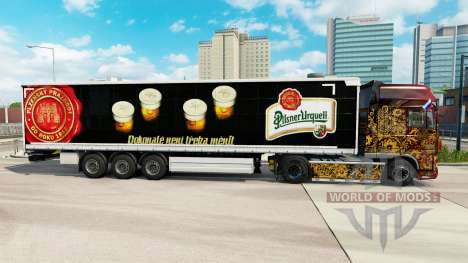
Alcohol By Volume (ABV): A measurement of the alcohol content in terms of the percentage volume of alcohol per volume of beer. Caution: This measurement is always higher than Alcohol by Weight (not included in this guide).Final Gravity (FG): The specific gravity of a beer as measured when fermentation is complete (when all desired fermentable sugars have been converted to alcohol and carbon dioxide gas). When fermentation has occurred, this number is always less than Original Gravity.A measure of the total amount of solids that are dissolved in the wort, it compares the density of the wort to the density of water, which is conventionally given as 1.000 at 60 Fahrenheit. Original Gravity (OG): The specific gravity of wort (unfermented beer) before fermentation.Descriptive terms are always listed from least to most intense.Įxplanation of Quantitative Style Statistics

To create this study guide, we looked at the world beer styles recognized by the Brewers Association (publishers of ) and narrowed that list down to 79 styles in 15 style families. In other words, it takes time before any trendy new type of beer is deemed a recognized beer style. Another factor is that new beer styles usually become established by developing a track record of multiple breweries making the same type of beer over years and years. That makes it difficult, if not impossible, to fully document all types of beer being made at any given time.

brewers, new beer styles are constantly evolving. Due to the popularity of craft beer in America, there are now multiple beer styles uniquely credited to the U.S.ĭue to the constant experimentation and exploration by today’s U.S. They often take classic, old-world styles from great brewing countries like England, Germany and Belgium and add their own twists by modifying the amount or type of ingredients or the brewing processes. Beer StylesĬraft brewers use a wide variety of ingredients to achieve the aroma, body, flavor and finish they desire in their beer. Beer Styles include many common styles being made in the U.S. It is up to each individual brewer to decide whether they want to create beer within specific style guidelines or forge a new path and break the mold of traditional styles.īecause so many craft brewers brew outside style guidelines, it is impossible to make a list that fully represents the spectrum of beers being created today. However, as your beer journey unfolds, your desire for more descriptors and resources will grow.Ĭraft beer resides at the intersection of art and science.

The Beer Styles Study Guide may provide more information than many beer novices care to know. Use the Tasting Sheet to help you analyze and describe what you taste and if it’s appropriate for a particular beer style. The best part of learning about craft beer is getting to taste and experience what you’re studying. Using an alphabetical list of triggers - from alcohol to yeast variety - this text will help describe possible characteristics of a specific beer style.

The Beer Styles Study Guide (below and available as a PDF) is for those who want to dive even deeper and includes quantitative style statistics not found in the Beer Styles section.


 0 kommentar(er)
0 kommentar(er)
